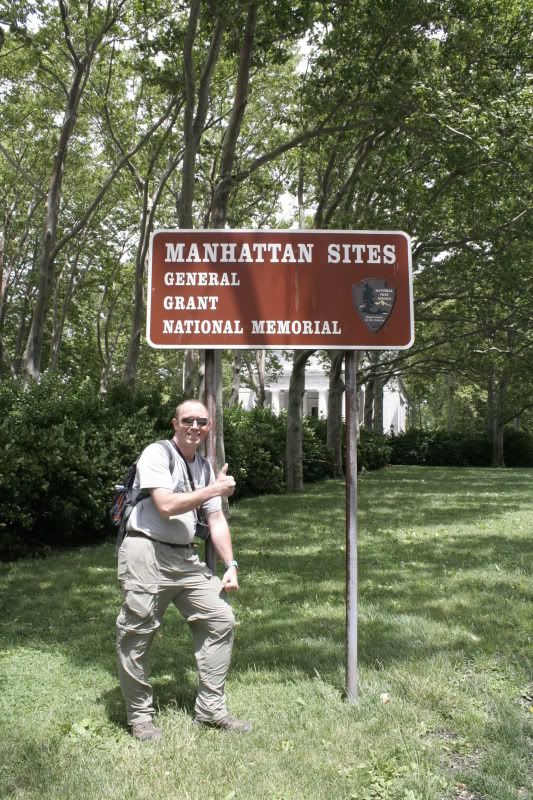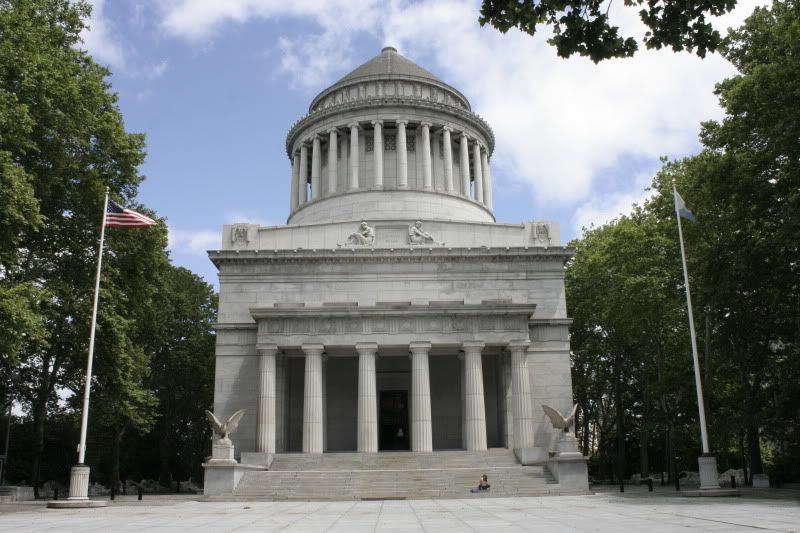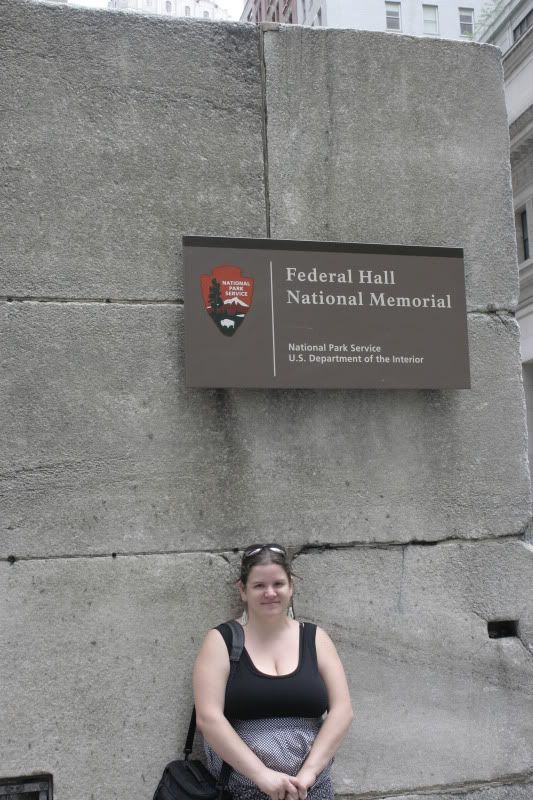Sleeping Bear Dunes National Lakeshore was nice and all, but now that we have visited Pictured Rocks National Lakeshore on the Upper Peninsula , we are Yoopers for life.
But I’m getting ahead of myself.
After waking up dew-covered in our thistle field outside Empire, we packed up the car and headed out in search of coffee and the road north. Neither of us had ever been to Michigan ’s Upper Peninsula , so we were eager to get there.
We opted to take the scenic route along the shore of Lake Michigan Sturgeon Bay
Soon, though, it was time to bid farewell from the lower peninsula that we’d called home for more than a week. We crossed the Mackinac Bridge
Other than the aforementioned dude who cursed at me as we bottlenecked into the toll booths – and by “He cursed at me,” I actually mean “I cursed at him” – (and the toll was only $3.50! We were counting on $10-$15. Welcome to the West), our experience of the Upper Peninsula has been nothing short of paradise. A slightly buggy paradise, but paradise nonetheless.
We were pretty amused by the tourist trap that is St. Ignace, the city you encounter right when you cross the bridge. Actually, we are pretty amused by every town on the UP, because if there’s something resembling a town here on something resembling a modern road, it does its absolute best to sell travelers “real Yooper gear” and pasties (which is pronounced “pass-tees” – NOT like the burlesque dancer’s nipple-cover) and fancy UP minerals and rocks.
We stopped at the “Mystery Spot,” which advertises itself as just that until you get into the parking lot and finally get a chance to actually read a little sign about what the Mystery Spot actually is. Apparently it’s one of those strangely-magnetized places (there are a number of them scattered around the country) where navigation tools cease to work, levels won’t level, people feel woozy, all that kind of stuff. This spot offered $7 tours (to which I say: “Why would I want to pay $7 to feel light-headed?”) and a little shop full of tchotchkies for travelers. Right near the Mystery Spot is the Deer Ranch, which we stopped at mostly to take our picture in front of the giant fiberglass deer out front (we didn’t go in to see the billions of albino deer the site claims to have living there).
When it came time for lunch, we knew we had to try the magical local cuisine known as the pasty. It’s essentially a pastry filled with anything you can imagine (everyone claims some different concoction is the “original” recipe) and formed freestyle with no dish to shape it. We stopped at Lehto’s, a little stand on the side of the highway that sells nothing but beef and onion pasties and cans of soda. But the place has been there since 1947, so we figured it had to be pretty good, right?
We were right to stop there. The guy behind the counter (yes, one guy – and I think there was one person back in the kitchen, and that’s it. No restrooms, no credit card machine, nothing but beef pasties) was really nice, and the pasties were fantastic. It was hot out, and the pasties were hot enough to burn our mouths, but they were the perfect size for a modest lunch for one person (but that didn’t stop me from wanting another one when I was done).
The further we got from St. Ignace, the more nothing we passed. It didn’t take long at all for the motels and clusters of vacation cabins to turn into miles upon miles of pine trees and the occasional abandoned cluster of vacation cabins. At Epoufette we cut north on a county road so that we could take a short drive through Rexton.
My sophomore year of college, I wrote a short story about a girl from Long Island who travels to visit family in Rexton , Michigan
Rexton was not exactly as I’d pictured it for my story, and upon going back to read the story I would probably have to re-tool the landscape descriptions (I don’t remember exactly, but I probably talked about barns and farmhouses and fields like I’d seen in Dexter – but in the UP it’s all just trees and more trees). But overall it was great; a small cluster of houses, a couple streets, a Mennonite church (how perfect! If I ever go back to edit the story I will totally make the family Mennonites), and… That’s it. Most of the houses were tiny run-down saltboxes like you find all over the UP – not much more than a trapper’s cabin updated to have shingle siding and a screen door. Those that weren’t saltboxes were mobile homes from the ‘70s with particle board patches on the outside. There were a few houses that were a little nicer, and I figure that’s where my characters would have lived.
Driving through a town like Rexton, Pat and I were struck again by the question of how in the world people in areas like that could possibly make any money. Some of them probably live on public assistance, but the rest – seriously, where? There were a few companies floating around the roads we drove, like a granite company and a concrete company, but other than that – nothing. Even if someone needed the plumber we saw to fix their pipes, where would the person with the pipes get the money to pay the plumber? I’ve never lived in a tiny town like those so I have no clue – I mean, I live in a tiny town now, but it’s only 26 miles from the state capitol and 50-ish miles from the state’s largest city. These places on the UP don’t have much by way of a nearby metropolis.
We managed to get to the main interagency visitor center for Pictured Rocks National Lakeshore and the Hiawatha National Forest Hiawatha National Forest
She replied, “You can just drive your car down any of those roads and camp, as long as it’s forest land.”
Um… We know. But are there any good places in particular?
“Oh, any of those roads.”
Okay.
We figured she wasn’t going to be much help (she didn’t look like much of a camper herself), so we decided to fend for ourselves. Our main concerns were finding water – we were very low on drinking water, and while Patrick has a water filter, we didn’t want to use it if we didn’t have to – and getting me a shower or some other manner of bathing, because it was now Monday and I hadn’t showered since Saturday morning, and I’m a bit of a hygiene freak.
We got in the car – Patrick a little irritated at our lack of specifics, me a little irritated that I was so filthy – and set off down H13 to find us some camping.
After trying a few times to go down roads that we thought would end up at bodies of water, only to find them dead-ending or impassible, we had our first indication that things were going to be okay. We found some water relatively easy. We took a detour off 13 to the Island Lake
We smelled it, and it smelled like metal, so we knew it was just rust. Pat’s water filter would take care of the crap in it (but, as we found later, not the taste).
The campground was primitive, with no more facilities than that one brown-water pump, yet it was $16 to stay a night – oye! I mean, I know the forest service isn’t exactly rolling in dough, but that’s a lot of money for a place to pitch a tent and some rusty water.
We continued on and turned down a road that led to a strange swampy-looking place that wasn’t a swamp at all. It was a large expanse of tons of dead trees poking up out of ground that looked like it was covered in marsh plants, but when you walked into the field you realized the ground was actually sandy, and the “marsh plants” were actually ferns. We didn’t figure out why all the trees were dead, but it was pretty strange.
We drove down the road a ways, having no luck finding a place to camp, not to mention any water. Soon we saw a big pickup truck with a trailer behind it was coming our way on the one-lane road, so we pulled off the road to let it by.
The truck stopped, though, and a smiling forty-something man with a bandana leaned out the open window.
“You lookin’ fer blueberries, eh?” he asked.
“No, just trying to find some camping,” Pat said from the passenger seat. “Know of anywhere around here? Maybe on a stream?”
“No… No, no streams in this area,” he said. “I’m just out here choppin’ some wood.”
Somehow, both Patrick and the man got out of the cars and began talking, and when Patrick pulled out a map and told the man what we were looking for, he said, “Oh, yah! Yah, go down 13, and you’ll see Wide Waters on the right. Right there on the left, there’s a road, and then it will come to the Indian River . Turn right before you get to the river and there’s a road there with all offshoots to the right where people cut roads and campsites to put their canoes in. People camp there all the time.”
Bingo!
This was exactly what we wanted from the woman at the visitor center. We should have known to just ask a Yooper.
We hung out with the man for another few minutes, asking him how to find blueberries. He told us about how, when he was a kid, his family was very poor, so he and his siblings would all go out picking blueberries – then their father would sell them, and fed the whole family on blueberry money. He said the only problem with camping near a blueberry patch was “the bears and the cah-yoots.” He told us that he’d be picking blueberries, and he’d look up and not ten feet away a bear would be doing the same. But he knew he wasn’t in much danger – “the blueberries were sweeter than me.”
He brought us to a little bush on the ground, and it was just like the blueberry bushes we’d pick from as kids in Bass River State Forest
We thanked the man and I thanked the powers that be that Patrick is as nice as he is. For some reason, I have been more hesitant lately to talk to strangers – but Patrick isn’t, and many times on this trip he’s gotten us tips that I never would have gotten by simply smiling and going on my merry way. I have never been good at asking for help, but recognizing when you need it is one of the most important life lessons you can learn – especially while traveling.
We followed the man’s directions and, sure enough, the first campsite we stumbled across was beyond perfect. About 150 feet in from the road on a slightly bumpy little rutted sand driveway was a site with a trim stone fire pit and a steep eight-foot-ish embankment down toward the river. We went and looked at another few sites, but realized we weren’t going to find one this nice anywhere else.
We pitched our tent and this has been our home for the last two nights, and will be our home tonight again. I almost don’t want to leave in the morning.
My first order of business upon arriving was to take a bath in the river. The Indian River is actually pretty deep – probably four feet deep at its lowest point near our campsite, with a beautiful clean sandy bottom and a swift current of clear water the color of the weakest cup of tea you’ve ever brewed. I picked my way down the bank to a spot where a bunch of large stones rested in the water, forming a perfect stairway down into the water, not to mention a little shower seat and a place to put my soap while I washed up. The water was warm enough and the spot secluded enough that I took my time, even shaving my legs. It was far better than a campground shower any day.
That night we turned in relatively early. There was a whipporwill off near the road that sounded just like a car alarm and went off most of the night. Sometimes, in half-sleep, I could swear that I had distinguished two birds, calling and answering each other in a rapid and perfect pattern of whoops, never stumbling or hesitating for hours and hours on end.



